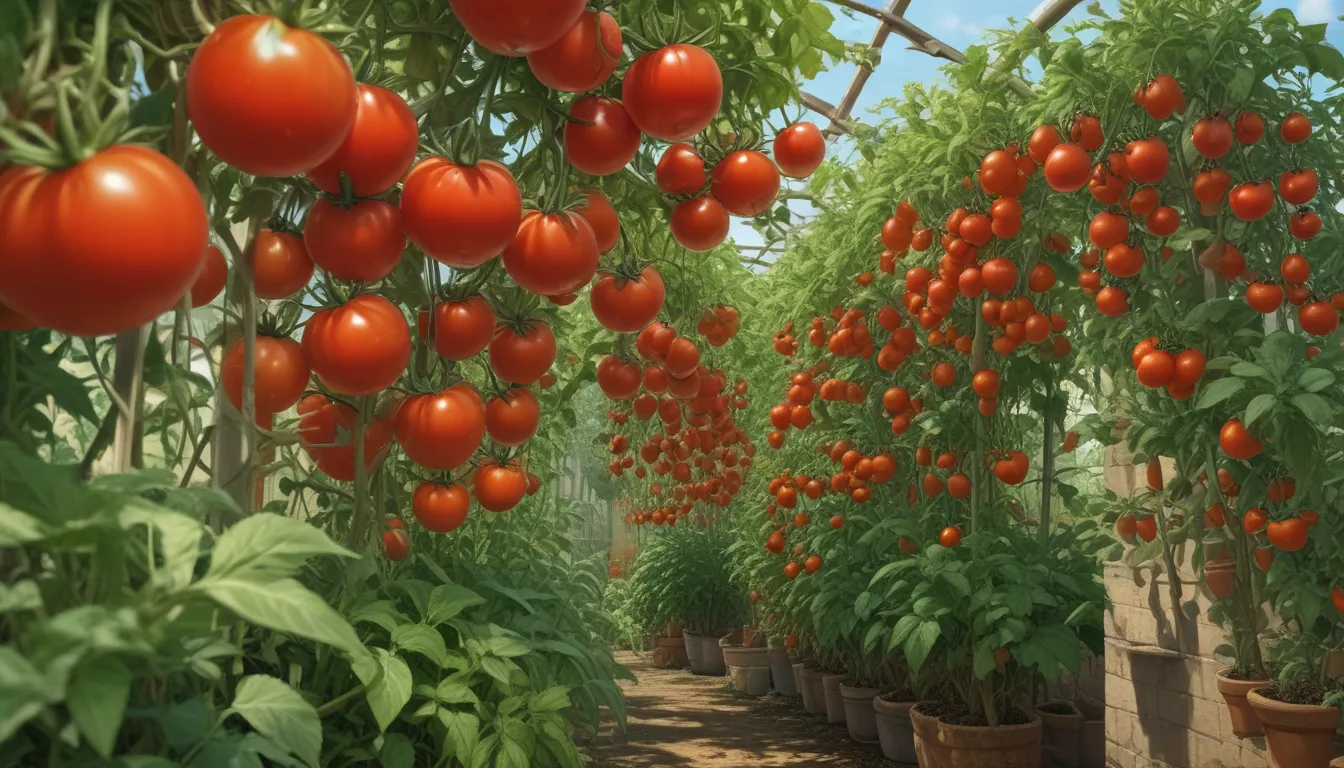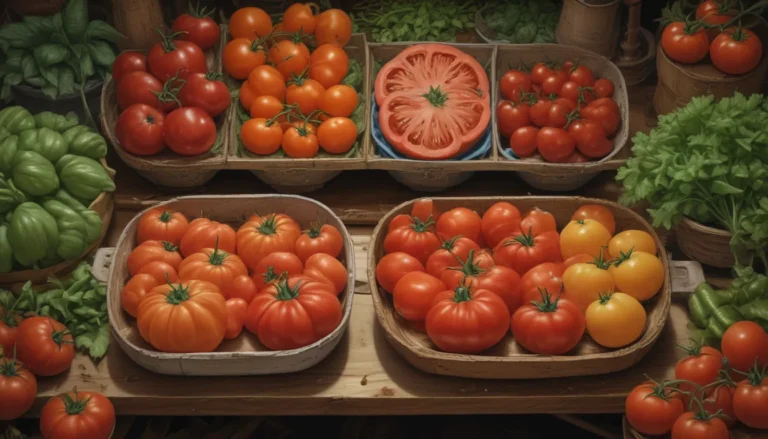Tomatoes 101: A Comprehensive Guide to Growing and Caring for Your Tomato Plants

Tomatoes are a popular vegetable among backyard gardeners, and for good reason! Not only are they easy to grow and thrive in various conditions, but freshly picked homegrown tomatoes are far superior in taste compared to store-bought ones. In this in-depth guide, we will cover everything you need to know about choosing, planting, and caring for tomato plants to ensure a bountiful harvest.
Why Grow Tomatoes?
Tomatoes, scientifically known as Solanum lycopersicum, are not just delicious vegetables, but are in fact, considered fruits botanically. With a rich history that dates back to ancient civilizations, tomatoes have stood the test of time and continue to be a staple in cuisines around the world. What makes tomatoes a popular choice among gardeners is their ease of cultivation, versatility, and abundant yields.
When it comes to choosing the perfect tomato plant for your garden, there are a few key factors to consider. Establishing whether you want a determinate or indeterminate variety, understanding propagation methods, and selecting the right cultivars are all essential steps to ensure a successful harvest.
Cultivation and History
Originating in Central and South America, tomatoes have been cultivated for centuries. Introduced to Europe by Spanish colonists in the 16th century, tomatoes quickly gained popularity. In the US, Thomas Jefferson grew tomatoes in his garden at Monticello, further solidifying their place in American cuisine.
Determinate vs Indeterminate
One of the first decisions to make when selecting a tomato plant is choosing between determinate and indeterminate varieties. Determinate tomatoes produce a large crop all at once and stop growing after fruiting. On the other hand, indeterminate tomatoes continue to grow throughout the season, requiring proper support due to their vining nature.
Propagation
Starting tomato seeds indoors before the last frost date is crucial for ensuring a healthy start to your plants. Hardening off seedlings and transplanting them into the garden once the weather has warmed up will help prevent frost damage.
How to Grow
Tomatoes thrive in full sun and well-draining soil that is rich in organic matter. Give your plants enough space for proper airflow, and consider using a balanced fertilizer to promote fruit production. Water deeply but avoid overwatering to prevent issues such as fruit cracking.
Planting in Pots
For gardeners with limited space, growing tomatoes in containers is a great option. Choose large containers with drainage holes, and be prepared to water more frequently than plants in the ground.
Hydration and Support
Consistent watering, cage training, and staking are essential for proper plant growth and fruit production. Protect your plants from pests and disease by implementing good gardening practices.
Cultivars to Select
Choosing the right tomato cultivar depends on your preferences, whether it’s for canning, fresh eating, or unique flavors. From classic varieties like ‘Celebrity’ and ‘Roma’ to colorful options like ‘Indigo Rose’ and ‘Persimmon,’ there are endless choices to suit your needs.
Managing Pests and Disease
Protecting tomato plants from pests and diseases is crucial for a successful harvest. Planting marigolds and basil nearby, rotating crops, and using natural repellents can help keep common pests at bay. Be on the lookout for aphids, hornworms, stink bugs, and slugs, and take appropriate measures to control them.
Pests
Various pests such as aphids, beet armyworms, hornworms, and rodents can damage tomato plants. Identifying and treating infestations promptly is key to preventing crop loss.
Disease
Tomatoes are susceptible to fungal and bacterial diseases such as blight and blossom-end rot. Apply fungicides and practice good garden hygiene to keep plants healthy and disease-free.
Harvesting
Knowing when to pick tomatoes is crucial for optimal flavor. Look for mature fruits that have developed their ripe color and have a firm but slightly yielding texture. Avoid refrigerating unripe tomatoes to preserve their flavor.
Preserving
If you have an abundant harvest, there are various ways to preserve tomatoes for later use. Drying, freezing, and canning are popular methods to extend the shelf life of your harvest and enjoy homegrown tomatoes year-round.
Recipes and Cooking Ideas
Once you have a bounty of fresh tomatoes, consider using them in a variety of delicious recipes. From hearty soups and salads to savory sauces and appetizers, there are endless possibilities to enjoy the fruits of your labor.
Quick Reference Growing Guide
For a quick overview of tomato cultivation basics, refer to our growing guide that outlines key information on planting, watering, soil requirements, and common pests and diseases.
The Essence of Summertime
Tomatoes are quintessential summer vegetables that bring joy to gardeners and food enthusiasts alike. With proper care and attention, you can enjoy a plentiful harvest of juicy, flavorful tomatoes throughout the season. Share your favorite tomato varieties and growing tips in the comments below and continue to explore the world of homegrown tomatoes!
In conclusion, growing and caring for tomatoes is a rewarding experience that offers a plethora of culinary possibilities. With the right knowledge and techniques, you can cultivate healthy tomato plants and enjoy a fruitful harvest year after year. Happy gardening!





